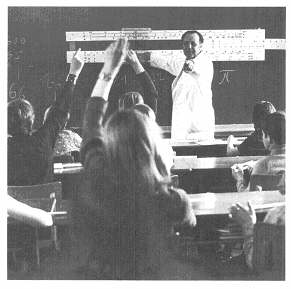A note in a recent UKSRC newsletter, SkidStick, generated considerable "Musing". It asked "Which twelve slide rules would you keep?" based on an idea espoused by the late, great Cecil Clutton that he would never have more than 12 of whatever he was collecting. The advent of a thirteenth would force the sale of one of the existing collection to make way for the newcomer. Apart from hating to part with anything that I have carefully and laboriously collected, I do not believe that I have the discipline to maintain such a small representative collection. Mine would continue to grow! Listing my personal dozen brought to mind all sorts of parameters the slide rule collecting fraternity has previously discussed. These parameters include general or specialist, old or new, value, rarity, particular pleasure to the collector, and a whole host of other less tangible ideas. After much thought, my list is: - A Fuller (my favourite) - A Thacher (wishful thinking) - A Unique (why not?) - At least one watch-pocket slide rule, (Fowler, Calculigraphe, or Lords? Oh dear, how difficult!) - An Otis-King (another helical) - A fancy Faber-Castell (2/82, or something similar with lots of scales) - A Coggeshall (2-foot,2-fold example) - An "Everard" alcohol rule (example of early design) - A Thornton AD050 (most common slide rule on earth!) - A Rietz or Mannheim rule (typical general purpose rule) - A 20" rule (example of the type) - An F-C TR (with electronic calculator) for sheer idiosyncrasy of the design. What would be your list? Perhaps to simplify things further what would be just your top 6 slide rules?
For those interested in the history of a particular slide rule marque, the publication following the recent International Meeting of Slide Rule Collectors in Germany, of "Dennert & Pape, ARISTO, 1872 - 1978", edited by Klaus Kühn and Karl Kleine is a real watershed in such publications. It is incredibly comprehensive, covering not only slide rules and all their associated ephemera, but also the rest of the panoply of scientific instruments made by D&P. Here in England the familiar ARISTO plastic slide rules were a popular choice to lots of people over many years and they developed a reputation as a nicely designed, long lasting slide rule. The most commonly found now are the range of "Scholar" plastic slide rules in their familiar red and white plastic pull-apart boxes, and the Aristo "Studio" Duplex plastic rules in the grey and buff boxes. Ah, happy days!

The image is from "D&P ARISTO" (see above) which included a series of Technical Notes produced for teachers of slide rule technique both in school and university. How many of you sat in a class such as this, with a teacher in a white coat, using a large (anything from 3 foot to 7 foot long) Demonstration Slide Rule to instil either the basics, or indeed the clever ways, of using your precious Slip Stick?
By the way, did you call it a Skid Stick or a Slip Stick?